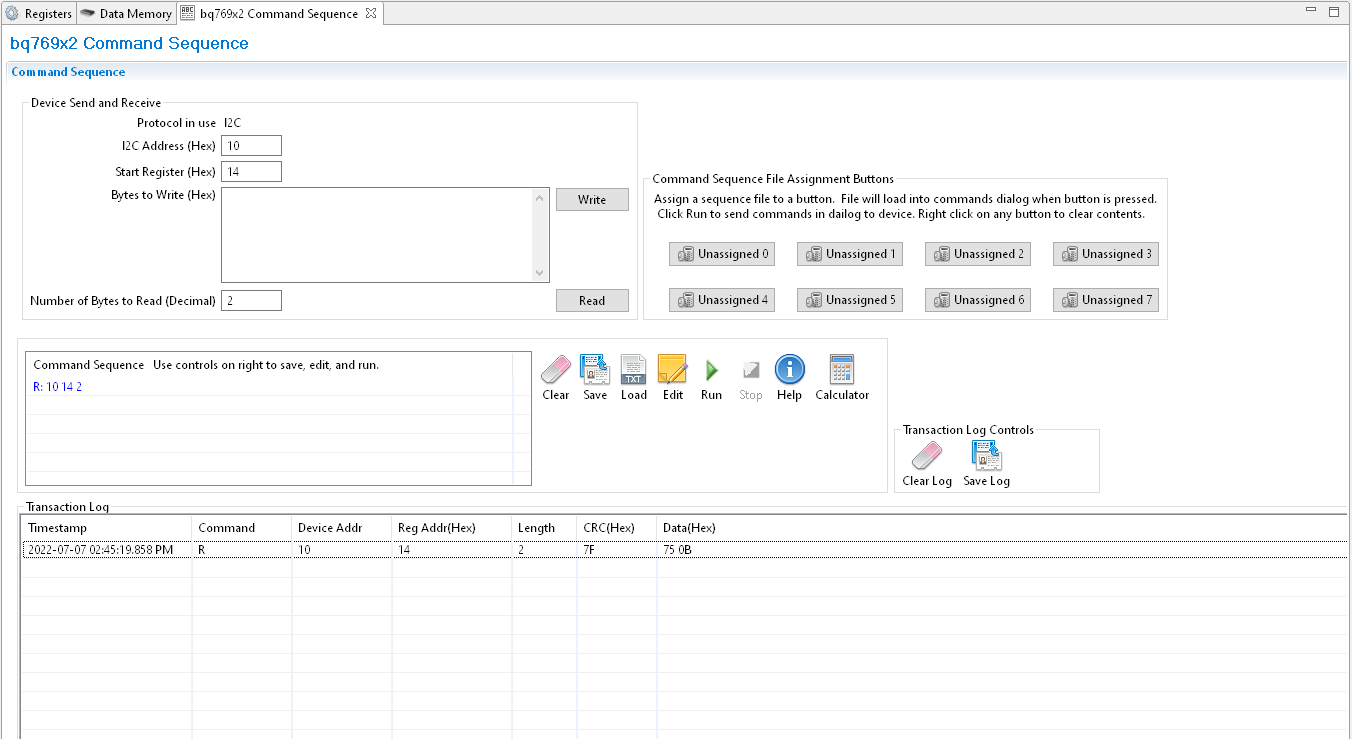SLUUCJ6 November 2023
- 1
- BQ76907 Evaluation Module
- Trademarks
- 1Features
- 2BQ76907 EVM Quick Start Guide
- 3Battery Management Studio Software
- 4BQ76907 Circuit Module Use
- 5BQ76907EVM Circuit Module Physical Construction
3.7 Command Sequences
Features are controlled by commands as described in the BQ76907 data sheet. Data is available from registers, and the registers view shows data, but a user may want to send specific commands to the device. The Command sequences tool allows this operation and is shown in Figure 3-7. The Device Send and Receive section allows read or write to a single or consecutive locations. The Command Sequence section allows reads and writes to be intermixed in a sequence. Sequences may be stored to files or called from files. Files may be assigned to buttons in the Command Sequence File Assignment Buttons section. Results can be viewed in the Transaction Log and saved to a file if desired.
 Figure 3-7 Command Sequence View
Figure 3-7 Command Sequence View